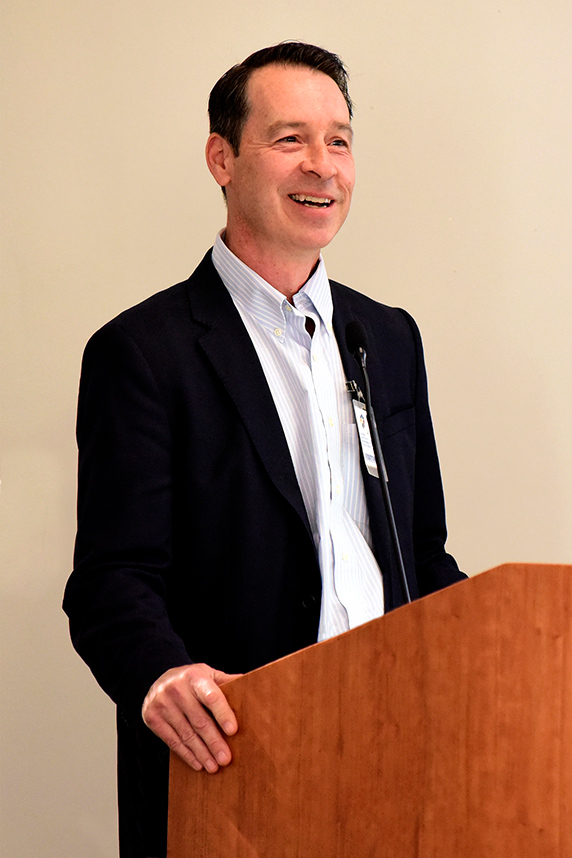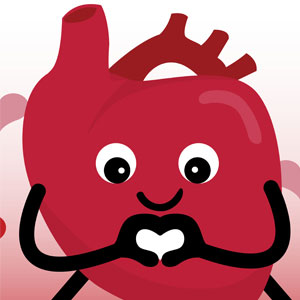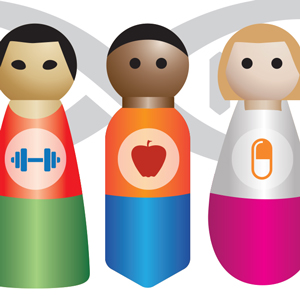Lipids play vital roles in the body, helping to store energy, produce hormones, and make cell membranes. Surprisingly, scientists are still trying to learn how the body maintains appropriate levels of lipids, such as cholesterol, according to Peter Tontonoz, M.D., Ph.D. He spoke Mar. 10 as part of the NIEHS Distinguished Lecture Seminar Series.
 Tontonoz credited many of the findings he presented to the insights of a former postdoctoral fellow in his lab, Jaspreet Sandhu, M.D. (Photo courtesy of Steve McCaw)
Tontonoz credited many of the findings he presented to the insights of a former postdoctoral fellow in his lab, Jaspreet Sandhu, M.D. (Photo courtesy of Steve McCaw)The University of California at Los Angeles professor presented recent research that could explain how high-density lipoprotein (HDL), also known as good cholesterol, is transported from a cell’s outer membrane into specialized areas within the cell.
John Cidlowski, Ph.D., head of the NIEHS Signal Transduction Laboratory, hosted the event. He noted that Tontonoz’s research has shifted our understanding of fundamental concepts such as the mobility of lipids.
“I have been impressed by the detailed analysis of every problem that he attacks in terms of his research,” said Cidlowski. “I’ve never heard him give anything other than a spectacular talk.”
The Rosetta Stone
Tontonoz explained that major health problems can result when cholesterol is not processed properly. For example, people with familial hypercholesterolemia lack the receptor for low-density lipoprotein, also known as bad cholesterol. Because their bodies cannot clear this form of cholesterol from their bloodstream, risk of cardiovascular disease is high. Tontonoz said mice with similar genetic defects displayed symptoms related to that condition.
 Cidlowski’s research focuses on the actions of glucocorticoids, a group of stress hormones released from the adrenal gland. (Photo courtesy of Steve McCaw)
Cidlowski’s research focuses on the actions of glucocorticoids, a group of stress hormones released from the adrenal gland. (Photo courtesy of Steve McCaw)His lab uses such mice to understand how cholesterol transport works. “A launching-off point for us has been a set of nuclear receptors called LXRs [liver X receptors],” said Tontonoz. “Over the last 20 years, we have used LXRs as a sort of Rosetta Stone to try to get at new pathways that might affect the ability of cells and animals to traffic and metabolize cholesterol.”
LXRs act as molecular switches that turn other genes on or off in the cell. Tontonoz and his team have knocked out, or deleted, genes that LXRs control to observe cholesterol-related effects in mouse models.
 Due to the coronavirus, many people watched the lecture online, and those who attended in person maintained their distance. (Photo courtesy of Steve McCaw)
Due to the coronavirus, many people watched the lecture online, and those who attended in person maintained their distance. (Photo courtesy of Steve McCaw)Black and white
The lab’s latest findings involve Aster proteins. The group discovered that these proteins reside inside a specialized structure in the cell known as the endoplasmic reticulum (ER). Through biochemical and cell biology experiments, Tontonoz’s team showed that Aster proteins help to shuttle HDL between the cell membrane and the ER.
When the lab members knocked out one of the Aster genes, called Aster-B, in a mouse, they found that HDL stopped moving from the cell surface into the ER of the adrenal gland. There, HDL is needed to make steroid hormones, such as cortisol. “I’ve never seen a phenotype this dramatic, so black and white,” said Tontonoz. “There was no cholesterol there at all.” Phenotype refers to observable conditions that result from genetics and the environment.
He explained that because these mice cannot make cortisol, they may be more susceptible to stress. His laboratory is currently looking into the potential health effects associated with defects not only in Aster-B but also in Aster-A and Aster-C proteins.
Such research on the basics of cholesterol transport in animal models could lend insight into potential therapies for humans with high cholesterol and other lipid disorders.
Citation: Sandhu J, Li S, Fairall L, Pfisterer SG, Gurnett JE, Xiao X, Weston TA, Vashi D, Ferrari A, Orozco JL, Hartman CL, Strugatsky D, Lee SD, He C, Hong C, Jiang H, Bentolila LA, Gatta AT, Levine TP, Ferng A, Lee R, Ford DA, Young SG, Ikonen E, Tontonoz P. 2018. Aster proteins facilitate nonvesicular plasma to ER cholesterol transport in mammalian cells. Cell 175(2):514−529.e20.
(Marla Broadfoot, Ph.D., is a contract writer for the NIEHS Office of Communications and Public Liaison.)









